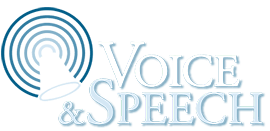Transcript
As I put the finishing touches on my previous video about the importance of rehearsal for public speaking and presentation I began to wonder if viewers don’t know how to rehearse effectively. Obviously it’s not just a matter of repeating the material over and over until you slip into a coma. Here are some tips for effective rehearsal.
When you rehearse it’s helpful to have an objective way to review what you’re doing. You need constant feedback. In the old days we used a mirror. Now we all have a video camera in our pocket. Video feedback is invaluable because the camera is never distracted or forgetful.
Make a video of the first two to three minutes of your speech. That’s plenty to start with. Play back the video and try to view it through the eyes of a stranger. Pretend you’re not evaluating yourself but someone you don’t know. You need that objective distance.
When I coach a speaker I always ask myself, “What are my first impressions?” First impressions are powerful focusing information. They often indicate what will produce the most improvement in the shortest amount of time. Beyond that, if I were evaluating you, I’d look at three broad categories of public speaking skill: preparation, delivery and connection.
When evaluating preparation I consider whether your content is clear and compelling. Is the information structured well and designed to maximize potential impact? Are you demonstrating mastery of your material? Are you invested in the topic, speaking with passion, conviction or enthusiasm? Yes, even that takes preparation. Are your notes formatted to help your performance or are they actually a hindrance? Are your supporting tools such as laptop, remote control and the like integrated effectively? These are all factors that indicate how well you’ve prepared.
When evaluating delivery I start with physicality. Are you relaxed, grounded and open to the audience? Are you breathing well, gasping for breath or forgetting to breathe? Are you using a voice that’s strong, clear and expressive? Are you speaking at a relaxed deliberate pace with clear articulation? Do you sound nervous?
Then I focus on your connection with the audience. What kind of relationship is being established? Do you appear to be confident and in command of the situation? Do you seem happy to be there and eager to share the material? Are you relating to the audience as individuals or a faceless crowd? Is your eye contact real or just an passing glance?
These are some of the things you can be looking for when you review your video sample. Take notes. What’s working well? What strengths do you bring to the process? Everyone is good at something. What needs more work? Clarify your strengths and areas needing development.
Then prioritize the challenges. What are the top three changes that will make the most difference? What can be fixed quickly without a lot of fuss? What skills will require more time and perhaps some training to develop? Get back in front of the camera and work on one thing at a time. Don’t try to fix everything at once, and keep using video feedback to monitor your progress.
This clear, specific and methodical approach will turn your rehearsals into powerful skill-building sessions. Do that diligently and I guarantee you will become a better speaker, certainly a competent speaker and maybe eventually a great speaker.
Thanks for watching. Leave a comment and tell me your favorite rehearsal techniques. I’ll see you in the next video.
Public Speaking Skills: Video Rehearsal
Of course rehearsal is an important public speaking skill but to do it effectively you need objective feedback. Although you might dislike seeing yourself on video, it’s a powerful tool for evaluating your current skills, focusing your practice and tracking your progress. Here are some specific things to look for when you’re using video rehearsal to enhance your public speaking skills.


